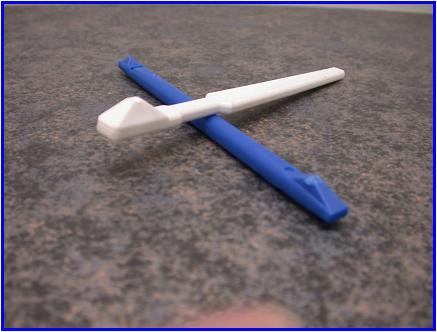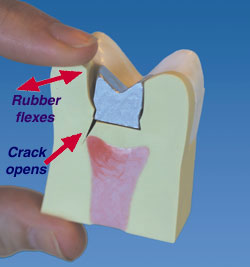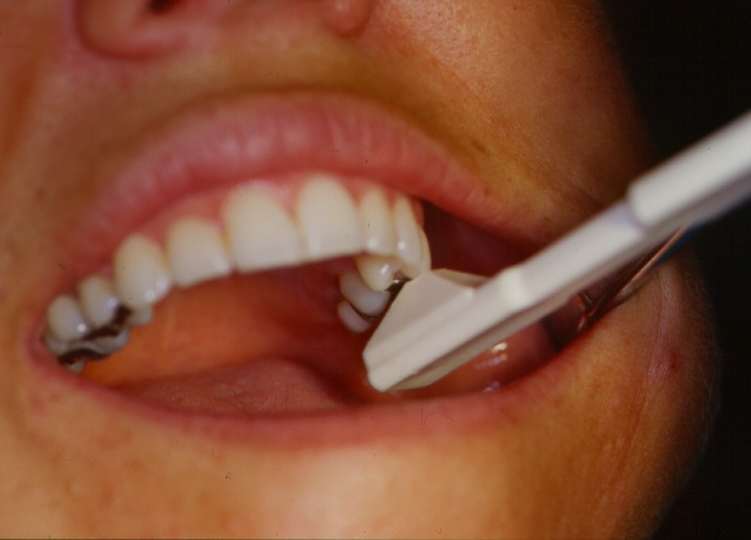Managing a cracked tooth
Cracked tooth can be a challenge to diagnose and treat. Here are some helpful hints on effective management.Tips to help you diagnose cracked tooth
- Anamnesis (pain when biting on tough things)
- Inspection (with operating microscope)
- Colouring with methylene blue
- Mobility of a tooth element
- Sound with percussion strongly deviates
Managment of the patient
1. On the first appointment, educate the patient about tooth cracks to allow him or her to decide which treatment options will be best.
2. Use a Tooth Slooth or similar device to locate the defective cusp or cusps. See pic below, it shows the device and its use and action



3. Prepare the tooth, make an impression, place a provisional restoration, and seat the
provisional restoration with abundant cement, usually eugenol. Some noneugenol provisional cements can cause tooth sensitivity after a few days of service, as well as leakage.
4. Call the patient about two days later, after the trauma of preparing the tooth and managing the soft tissue has subsided.
5. Instruct the patient to do the following while the dentist, dental assistant, or front desk person is on the phone: find a wooden pencil, place it on the occlusal surface of the provisional restoration, and bite with significant force on the provisional restoration while rocking side to side and forward and back.
6. Ask the patient if there is pain. If the tooth has a superficial crack into the dentin only, he or she will not feel pain.
7. Assuming the patient does not feel pain, tell your lab to make the crown or onlay.
8. Tell the patient and office staff to make the restoration seating appointment about two weeks later to seat the crown.
9. After desensitizing the tooth with Gluma from Heraeus or a similar product, seat the restoration with a relatively atraumatic, nonsensitizing cement such as RelyX Luting from 3M ESPE or Fuji Cem from GC America.
10. Now, going back to step No. 5, the phone call after the tooth preparation – if the patient still has pain when biting on the wooden pencil, the tooth probably has a crack either into the pulp or deeply under the bone.
11. Appoint the patient for a candid discussion about whether to do endodontic therapy and the needed restorative dentistry or to extract the tooth. Now I prefer to remove the tooth and place an implant with the necessary restorative dentistry. Before implants became mainstream, that would not have been my choice many years ago. Continuing with a root canal and the needed restorative dentistry has many potential reasons for failure on this type of tooth, but I have had success some of the time.
Teeth Whitening Facts and Myths
Fiber reinforced composites in dentistry
Changing concepts in Class I and II cavity preparation
Latest Research On Dental Pain
Curing lights for composite resins
Fluorosis, epidemiology, indices and treatment
Lasers in Root canal treatment and Endodontics
Abfractions? How they are important in Restorative Dentistry
Caries Prevention in Children - The Indian Challenge
Mouth Rinsing before dental procedures.
Infection Control Routine for the Dental Clinic
Shade selection and Management
Obstructive Sleep Apnea- Do you know about it?
Genetically modified bacteria may prevent cavities - Put you out of Business?
A primer on all composite class materials
Options for esthetic restorations
Immediate and Early loading of Implants
Placement of gingival restorative margins
Bonding for the New Millennium
Access Cavity Preparation - Molars
Restoration of endodontic teeth
New cavity-fighting agent shows promise
Tooth Loss Linked to Pancreatic Cancer in Smokers
2-min brush helps achieve cleaner teeth: Study
Gum disease raises death risk in diabetics: study
Brushing Right After Drinking Soda may Harm Teeth
Benefits of Pre-procedural mouth rinsing?
To Bond Or not to Bond Amalgam